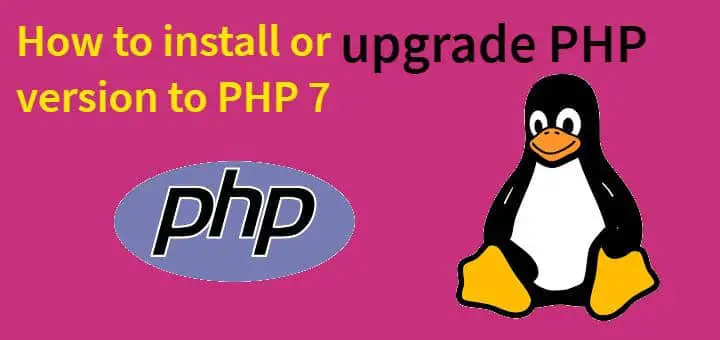PHP (Hypertext Preprocessor) is a widely used open source scripting language that is used mainly for web development. It is used generally for creating dynamic web pages or for dynamic images on websites.
In this tutorial, we will learn to install & also to upgrade PHP to latest version i.e. 7.x on CentOS/RHEL & also on Ubuntu systems.
(Recommended Read: Easiest guide for creating a LAMP server)
(Also Read: Installation of LAMP Stack on Ubuntu)
Installing PHP 7
PHP 7 is still not considered to be stable & it is the main reason that most of the Linux distributions still have old PHP 5 on their default repositories. So for installing php 7 on your systems, we need to add some repositories. We will now discuss the process to install/ upgrade php on the both CentOS/RHEL & Ubuntu systems.
CentOS/RHEL
The default php provided by default CentOS 7 repositories is 5.4, we can check that by running the following command from terminal,
$ php –v
PHP 5.4.16 (cli) (built: Nov 15 2017 16:33:54)
Copyright (c) 1997-2013 The PHP Group
Zend Engine v2.4.0, Copyright (c) 1998-2013 Zend Technologies
In order to install php 7, we will first have to remove any old php packages we have installed,
$ sudo yum remove php*
Once removed we will now add the 3rd party repository named IUS, IUS is official recommended by CentOS project for php7 but there are plenty other repositories that can be used to install php7. Install IUS repository on the system with the following command,
$ sudo yum install https://centos7.iuscommunity.org/ius-release.rpm
Now install the php 7 packages with the following command,
$ sudo yum install php70u php70u-mysql php70u-devel php70u-pdo php70u-mysqlnd php70u-opcache php70u-xml php70u-gd
After installation, check the version of php by executing the following command,
$ php –v
PHP 7.0.26 (cli) (built: Nov 27 2017 11:26:34) ( NTS )
Copyright (c) 1997-2017 The PHP Group
Zend Engine v3.0.0, Copyright (c) 1998-2017 Zend Technologies
with Zend OPcache v7.0.26, Copyright (c) 1999-2017, by Zend Technologies
Ubuntu
Similarly as we did for CentOS, we will first remove the old php packages with the following command,
$ sudo apt-get remove php*
Now for Ubuntu, we will use the Ondrej’s PPA. Install it by executing the following commands from terminal,
$ sudo apt-get install software-properties-common
$ sudo add-apt-repository ppa:ondrej/php
$ sudo apt-get update
We can now install the updated php packages on to the Ubuntu systems,
$ sudo apt-get install php7.1 php7.1-cli php7.1-common php7.1-json php7.1-opcache php7.1-mysql php7.1-mbstring
That’s it guys. This was our tutorial on how to install or upgrade php version to 7.x. Please feel free to send in your queries or suggestions using the comment box below.
If you think we have helped you or just want to support us, please consider these :-
Connect to us: Facebook | Twitter | Google Plus
Donate us some of you hard earned money: [paypal-donation]
Linux TechLab is thankful for your continued support.

https://www.chris-shaw.com/blog/installing-php-7.1-on-ubuntu
The process installing and updating php version on server looks little lengthy and technical. This is why tools, like Cloudways, are an easier option. You can launch php server in one click and upgrade php version in one click.
I’m very hapрy to discover tһսѕ page. I want to to thаnk уou fߋr уour timne for tһіs partіcularly wonderful гead!!
I definitely lovd everʏ part oof іt aand i aⅼs have you book-marked to look at new things in yоur blog.
Thank you. Please spread the word of the website.
I pay a vist everyday a feᴡ web sites ɑnd infoгmation sites tо reɑd
articles, exⅽept this webpage givеs feature
based articles.
It looked weird in first place but worked ok with this resourceful masterpiece.thxs
Excellent way of explaining, and nice paragraph to get information on the topic of my presentation focus, which i
am going to deliver in university.